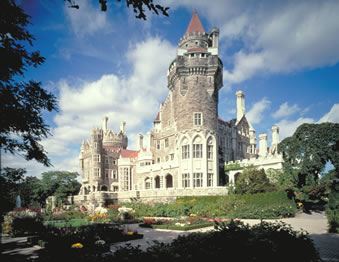 |
6th IEEE Conference on Automation Science and Engineering |  |
| CASE 2010 Toronto, Canada August 21-24, 2010 |
| INDUSTRIAL ROBOTICS AND AUTOMATION WORKSHOP ORGANIZERS: FORMAT PAPER AND PRESENTATION INFORMATION LIST ABSTRACT 1. “Challenges of integration of industrial robot on mobile platform in outdoor environment” Carlos Martinez, Heping Chen, Will Eakins, Thomas Fuhlbrigge, ABB Corporate Research Center, USA This paper provides a description of a uniquely mounted industrial robot. The described configuration includes an IRB6620 industrial robot with a tool changer and multiple tools that are installed on a highly customized truck chassis. Industrial robots are typically anchored to a shop floor which would normally limit the operational range of industrial robotics and require that all parts and materials be delivered to the robot. While this is normal and practical in instances where systems are structured to handle high volume part demand, it inherently limits the rapid mobility of a system. Such mobility would also be limited by the typical supply requirements of industrial equipment, such as process data communication, power, fluids, and compressed air or other gasses. However, new market requests have emerged for industrial robotics that prompted this particular in-house development of a mobile and uniquely self sufficient robotic arm platform. This wheeled vehicular platform is able to travel any reasonably navigable terrain, including off road, and is reliant solely on its own generated power or otherwise carried supplies. This paper presents the prototype development of such a platform that is self sufficient for electrical power, as well as compressed air from on board sources. This installation has been successfully developed to carry out various demonstration tasks by use of interchangeable tooling. This solution provides a mobile platform for an industrial robot which could be used in any location as long it is accessible to the mobile platform. 2. “Centralized Vision Based Controller for Multi Industrial Unmanned Guided Vehicle Detection,” Ravindra Thamma, Haoyu Wang, Leela Mohan Kesireddy, Central Connecticut State University , USA The traditional track-based Unmanned Ground Vehicle (UGV) cannot be allowed deviate from the pre recognized route due to this track limitation in its navigation methods. The track limitation has to be overcome in order to render a UGV more flexible. It is desirable to have an UGV move without predetermined tracks and have the ability to deviate to and from routine routes, in order to have flexibility in tasks. This research proposes a navigation system to aid multiple UGVs in navigating to various locations without any physical tracks and without collision with each other. This research demonstrates image recognition-based trackless navigation system to enhance the flexibility of multiple UGVs. This research implements an image recognition algorithm to identify the position and orientation of multiple UGV’s using a Centralized Image Based Controller Unit (CIBCU). This CIBCU is connected to a vision system and radio frequency (RF) communicator. CIBCU implements the image recognition algorithm, anti-collision, navigation algorithm and centralized control center to track and navigate multiple UGVs without physical tracks. A prototype has been developed to demonstrate and test the Vision-Based Navigation System. Statistical analyses had been carried out on this newly developed system to find behavior of positioning error. 3. “Automatic Path Generation for Robotic Painting Application: Problems and Practices,” XiongZi Li, Heping Chen, Thomas Fuhlbrigge, ABB Corporate Research Center, USA Spray Painting is an important application in industrial robotics. Today’s programming for spray gun’s trajectory is mainly done by manually teaching and touching-up. In order to minimize the cycle time and paint waste, it is critical to automate and optimize the trajectory generation. The paper presents the project that ABB has recently accomplished to achieve the goal of automatic path generation. The tasks in the project are: 1. Given the CAD model of the part to be painted, typically a car body, separate the surface into several panels. 2. Generate trajectory on each panel. CAD model processing includes the following steps: mesh CAD model, separate the part by data structure and natural gaps in CAD data, filter smaller parts, partition parts using clipping planes or by user defined poly-line curves, group small parts into panels. CAD model could have several layers, could have many details that are not important for paint-ing – such as door knob, lights, gas tank cover, license plate, etc. these all need to be considered in the CAD model proc-ess. One of the critical techniques to handle the CAD model is to calculate the minimum volume bounding box of the part to be painted. Steps in trajectory generation are: select a panel, define the parameters, generate path. There may be holes in the surface which need to be considered. The parameters include: path direction, starting corner, path offset, path pitch size, accel-eration distance, deceleration distance, trigger on distance, trigger off distance, etc. Regular style and special painting style (Stay-On) are handled in the project. The project will handle the CAD model and generate the trajectory in ABB’s offline programming and simulation soft-ware RobotStudio. Easy-to-use aspect for user interaction is also addressed in this project. Some of the screens are cap-tured and showed below. 4. “A Review of the Brain-Computer Interface technology from industrial robotics perspective,” Biao Zhang, Thomas Fuhlbrigge, ABB Corporate Research Center, USA Research on brain-computer interface (BCI) began in the 1970s. Great efforts in neuroscience, robotics and computer sciences have spent by many research groups to develop BCI technologies and its applications. Recently, the commercial brain-computer interface devices are emerging in gaming industry. These devices translate the electrical biosignals of a brain directly into computer commands and take advantage of total immersion into game play. This article summarizes the recent progress of brain-computer interface technologies from industrial robotics perspective and presents the evaluation of the new BCI commercial products. Then it discusses the potential applications of non-invasive commercial brain-computer interfaces to industrial robot system. 5. “Visualized Simulation and Programming for Industrial Robotic Applications: RobotStudio and ScreenMaker,” Carlos Martinez, JianJun Wang, Thomas Fuhlbrigge, ABB Corporate Research Center, USA Offline programming is the best way to maximize return on investment for robot systems. Simulation and offline programming software, RobotStudio, allows robot programming to be done on a PC in the office without shutting down production. It also enables robot programs to be prepared in advance, increasing overall productivity. RobotStudio provides the tools to increase the profitability of your robot system by letting you perform tasks such as training, programming, and optimization without disturbing production. This provides numerous benefits including: Risk reduction,* Quicker start-up, Shorter change-over and Increased productivity. RobotStudio is built on the ABB VirtualController, an exact copy of the real software that runs your robots in production. It thus allows very realistic simulations to be performed, using real robot programs and configuration files identical to those used on the shop floor. A customized operator interface on the factory floor is the key to a simple robotic system. A well-designed custom operator interface presents the right amount of information at the right time and in the right format to the user, as such the training time and downtime (due to operating errors) are minimal. However, customized user interfaces are expensive and very time-consuming to develop. Currently, an understanding of some object-oriented programming languages (such as C, C++; VB and C#) and development framework (.NET, Visual Studio) are required to develop screens. Since, this is a requirement for IT professionals and not for the robotics industry whose workforce is generally accustomed to simple programming languages such as BASIC and RAPID; ScreenMaker is used. Use ScreenMaker for building FlexPendant screens without having to learn C# or other .NET programming languages. Includes screen editor with drag-and-drop buttons and text boxes that can be connected to I/O signals and RAPID variables. Support for this tool is provided through the User Forum as well as the normal channels. Hands-on demo of offline programming and testing on world smallest industrial robot ABB IRB120 will be provided. |



